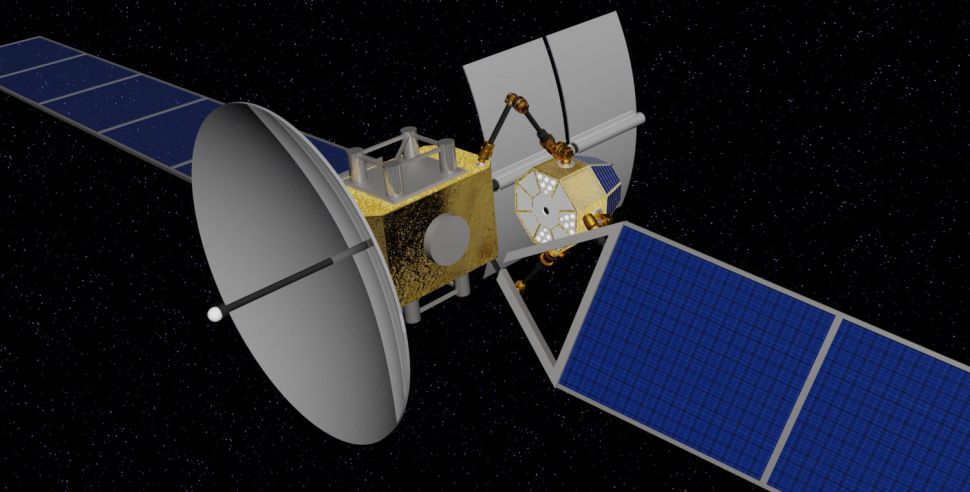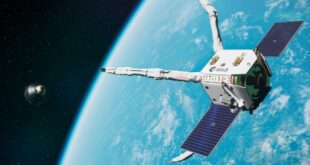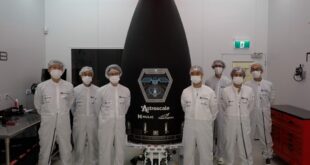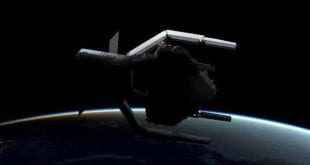 As part of the partnership between SpaceWatch.Global and The Strategist, we have been granted permission to publish selected articles. This is “Towards Space 3.0″ by Malcolm Davis, originally published on 14 November 2019.
As part of the partnership between SpaceWatch.Global and The Strategist, we have been granted permission to publish selected articles. This is “Towards Space 3.0″ by Malcolm Davis, originally published on 14 November 2019.

The space age has gone through two paradigm shifts since the launch of Sputnik 1 in 1957. Until the early 1990s, ‘Space 1.0’ was the province of government-run, taxpayer-funded space programs. Civil space agencies such as NASA, Russia’s Roscosmos and the European Space Agency, along with military and major aerospace prime contractors, were the main players. Then a paradigm shift to ‘Space 2.0’ got underway when the commercial space sector entered the global market and began to achieve dominance.
At ASPI’s recent ‘in conversation’ event, Australian Space Agency director Megan Clark made it clear that the agency has embraced Space 2.0 to promote the growth of Australia’s commercial space industry. It is the commercial sector that’s leading innovation and transforming the global space industry.
The global space sector is currently worth around US$350 billion, and may grow to US$ 1.1 trillion by the 2040s, or potentially even as high as US$2.7 trillion. At the moment, the ‘downstream’ sector has the biggest share of the global space market. The ‘upstream’, or space, segment will pick up, driven by the deployment of large mega-constellations in low-earth orbit (LEO) to provide new types of space services, such as broadband in the sky, and as an enabler for the ‘internet of things’.
That in turn will stimulate the growth of the space launch industry, particularly as reusable rocket technology, pioneered by companies like Elon Musk’s SpaceX and Jeff Bezos’s Blue Origin, dramatically lowers the cost of launching to orbit. We are seeing a gradual shift towards a space-based infrastructure that will underpin globalisation and a global information-based economy in the 2020s and beyond.
So what’s next?
In the same way that commercial Space 2.0 has challenged the traditional dominance of government-run space activities, a new paradigm shift towards ‘Space 3.0’ is on the horizon. While Space 2.0 is defined by the rapid growth of the commercial sector, Space 3.0 will see the emergence of an in-space economy. Bezos promotes the idea of millions of humans living and working in space, while Musk talks about settling Mars to make humanity a multi-planet species. But getting there isn’t just about providing shiny new reusable rockets—a business case has to be present.
Space 3.0 implies a shift of industry and economic activity into orbit, and beyond to the moon. For example, rather than hauling everything up earth’s steep gravity well on rockets, it’s ultimately cheaper to manufacture in space, and to sustain human activity through in situ resource utilisation (known in the space business as ‘ISRU’), while at the same time generating new types of industry and new paths to profit.
We’re seeing the first stirrings of Space 3.0 now. At last month’s International Astronautical Congress (IAC) in Washington, one company—Made in Space, based in California—demonstrated its work on developing advanced 3D printers for use in orbit to build objects in space—anything from electronic components for space applications to small satellites to even large structures that would support ambitious goals such as space-based solar power.
In-space manufacturing is just one example of a looming step-change in how we access and use space. It clearly implies a requirement for ISRU to use the raw materials to drive on-orbit manufacturing, which in turn will provide a more solid rationale for mining space resources on the moon and in near-earth asteroids. Made in Space has signed a US$73 million contract with NASA to build and fly a spacecraft, Archinaut One. The aim of the project is to construct two 10-meter solar arrays in orbit, in part to prove the technology, so that more ambitious goals can be pursued.
The intersection between in-space manufacturing and the exploitation of ISRU to sustain the next phase in human space activity has the potential to generate all sorts of new secondary industries and services by the late 2020s and early 2030s.
For example, commercial space platforms in LEO undertaking space manufacturing will need logistics support. There’s a clear expanding market for in-space repair and refuel of satellites and other platforms using robotic systems. That becomes easier if the means is produced at the source, rather than on earth. If we’re mining the moon for usable resources to drive in-space 3D printers, space logistics between the earth and the moon will be needed to sustain that infrastructure. At IAC, Bezos displayed a full-size mock-up of his company’s ‘Blue Moon’ commercial lunar lander.
Although much of this infrastructure will normally be unmanned, a human-tended requirement to manage and support them is clearly necessary. The establishment of a permanent human presence on the lunar surface as part of NASA’s Artemis program, with commercial companies such as SpaceX there as well, will drive the extension of commercial crew transportation not only from earth to LEO, but also from LEO across the earth–moon system.
There’s even a commercial opportunity to deal with accumulating space debris in orbit, which is likely to extend out to the moon as human activity expands outwards. At IAC, both Japan’s Astroscale and Switzerland’s ClearSpace identified a market for clearing hazardous space debris for commercial gain.
For Australia, this journey promises exciting times. Space 2.0 has transformed the global space sector for the better, and Space 3.0, which is likely to take shape later in the next decade, will open up even more ambitious horizons. That means Australia needs to be forward-looking and ambitious in how it thinks about space. We need to take a lead on driving policy and regulatory reform to manage the next decades of space activity, while managing risks of astropolitical competition between major powers and among commercial space actors that could generate a risk of conflict.
The vision of humanity as a space-faring species starts with the transition from Space 2.0 to Space 3.0. The new Australian Space Agency, along with the growth of our commercial space sector, provides a golden opportunity for us to position ourselves to play a key role in opening up the high frontier for the next great leap for humankind.
 Malcolm Davis is a senior analyst at ASPI.
Malcolm Davis is a senior analyst at ASPI.
Rights reserved – this publication is reproduced with permission. The original was published : https://www.aspistrategist.org.au/towards-space-3-0/





